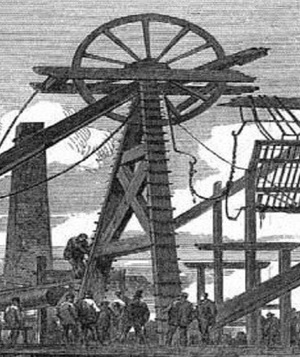Coal Mining Objects
The earliest record of coal mining comes from the 1200s. From early shallow workings in the west to the great deep collieries of the Dearne Valley, there were dozens of pits. Coal from the Barnsley Seam in particular was prized for the intensity of its heat. In the early days coal miners worked at the face, often on their knees or side for hours. Others were busy nearby, shifting coal to the surface. Women and children worked underground until 1842 when new laws were introduced.
Most of the coal mining related objects at Experience Barnsley are from the 20th century, here are a few of the highlights from our collections.
CEAG Lamps
Established in 1912, CEAG in Barnsley provides a range of high-quality lighting products and services. The origins of the company are steeped in mining history starting when they won an international competition set up by the British government to find a safe lamp. From over two hundred lamps designed, the CEAG Lamp was declared the winner. Judges described them as the “safest mining lamp in the world”. These lamps would have provided adequate and safe light to enable miners to work underground.
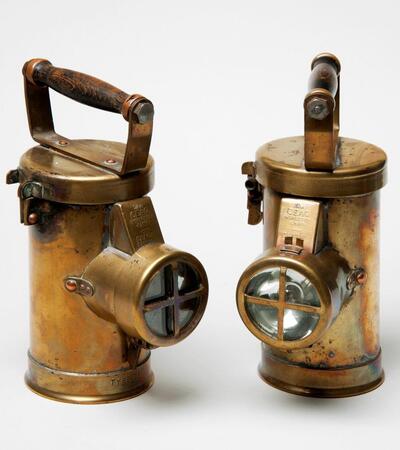
BMBC.TH.219
Pit Head Bath Soap
Treasured by many, a bar of soap and a bath at the pit head after a shift would have made a great impact on the lives of miners and their families. Many baths were built in the 1930s and meant that miners could clean up straight after finishing work rather than stay in dirty and damp clothes all the way home, until they could get in their own tin bath. This soap bears the mark 'P.H.B.' for Pithead Baths.
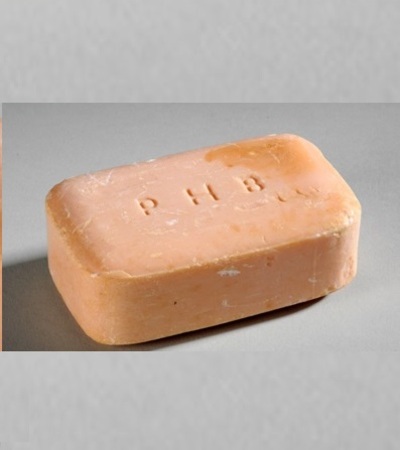.jpg)
BMBC.TH.488
Snap Tin
This tin is shaped like a slice of bread, has rounded corners and is strong and waterproof. It is often referred to as a snap tin because of the sound of the tin snapping open and shut. Miners would eat lunch near to where they were working and would have carried their food in a metal snap tin like this attached to their belt. A miner's diet usually consisted of bread and dripping and/or jam. Other types of food would go off in the heat underground. Keeping food in this would also prevent any pests like mice getting to the food before lunchtime.
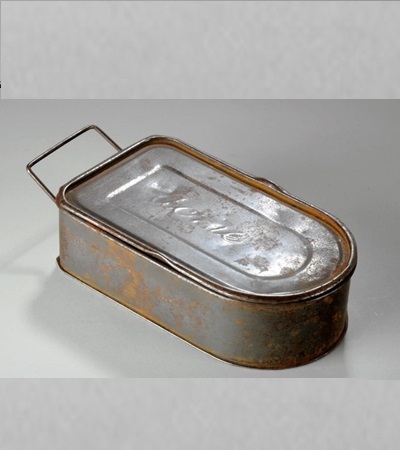.jpg)
BMBC.TH.380
Pit Checks
A number of names have been given to these small disc-like objects. Some people call them tallies, motties, lamp checks, pins, tickets and passes. In Yorkshire we tend to call them tokens and checks. The word check probably comes from the simple fact that they were part of a checking system. By 1913 the use of checking systems in British mines had been made mandatory by a supplementary amendment to the Coal Mines Act of 1911. These checks were used by miners to inform the colliery management of who was in work. They also let any emergency services know how many men were underground during an incident such as a fire or explosion. They were made from a variety of metals, including brass, copper, and nickel. Many were embossed with a number and name of the coal mine and came in a variety of shapes and sizes. In modern pits, they were replaced with electronic swipe card systems.
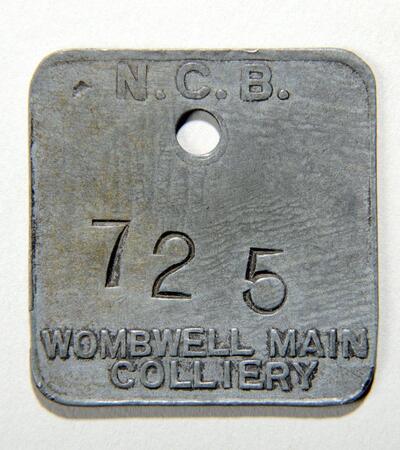
Haldane Humane Canary Cage
A haldane humane canary cage would have contained a canary to detect toxic gas in the mines. It was revolutionary at the time as it contained oxygen to revive the canary. The circular door would be kept open and had a grill to prevent the canary escaping. Once the canary showed signs of carbon monoxide poisoning the door would be closed and a valve opened, allowing oxygen from the tank on top to be released and revive the canary. The miners would then be expected to evacuate the danger area.
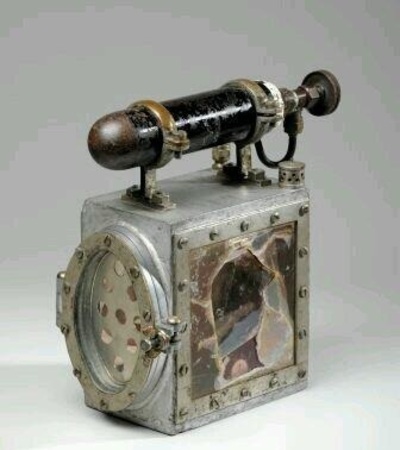
BMBC.TH.221
'Coal Not Dole' Pit Helmet
Worn by Rita Brenton a member of Women Against Pit Closures on the picket line. If you look closely in-between the 'Save our Pits' and 'Coal Not Dole' stickers you can see Rita's name. The first Barnsley Women Against Pit Closures rally was held at The Civic on 12 May 1984 and was attended by over 10,000 women from all across the country. Listen to our podcast to find out more
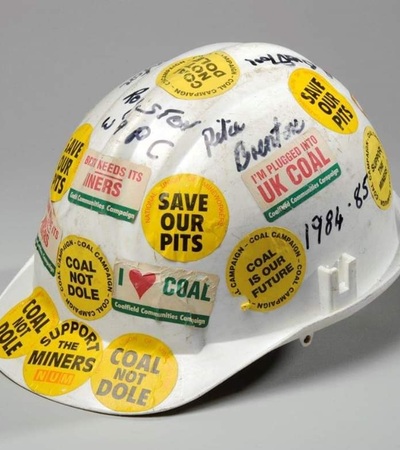
Wharncliffe Woodmoor Disaster Serviette
This serviette was produced in memory of the 58 miners who lost their lives in an underground explosion at the Wharncliffe Woodmoor Colliery on 6 August 1936. It is believed in 1887 the British firm John Dickinson Ltd first started printing on top of serviettes, turning them into souvenirs. Soon after, commemorative serviettes were produced for notable events and sold by street vendors. The money raised was often for charities, in this case to help those affected. Listen to our podcast to hear from people who lived in the area at the time of this horrific disaster.
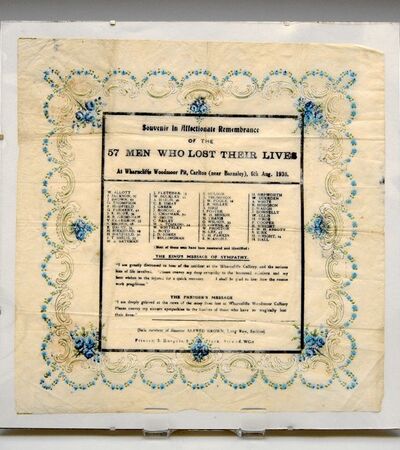
Commemorative Plate
A decorative plate with text that reads '”The Heart Beat of the Yorkshire Coal Field. For the sake of the future, we must not forget.” It also features illustrations of Barnsley pits in the centre and along the entire rim of the plate. On the reverse it reads, “The South Yorkshire coalfield was the heart of the nation for providing fuel in times of peace and war. The industry is now history, but we must keep the memories alive. The pits may be gone, but the pride of the Yorkshire Miners will live forever.” Limited edition, numbered 210 of 1000. This is just one example of the many commemorative plates which celebrates mining history.
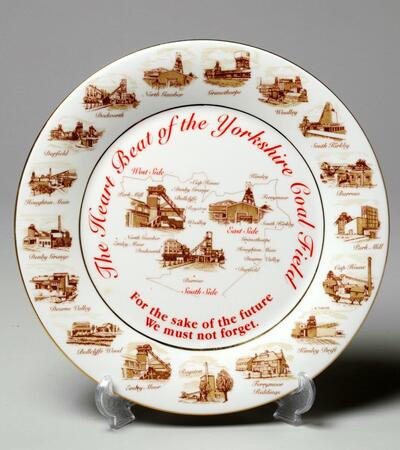
Badge Collection
Badges, especially enamelled ones, are a vastly popular and commonly collected form of mining memorabilia. Badges could have been issued from collieries or unions and action support groups. This collection on display at Experience Barnsley shows over 200 badges from all around England and Wales. You can see badges from the Barnsley area including ones from Royston W.A.P.C and the Yorkshire area NUM.
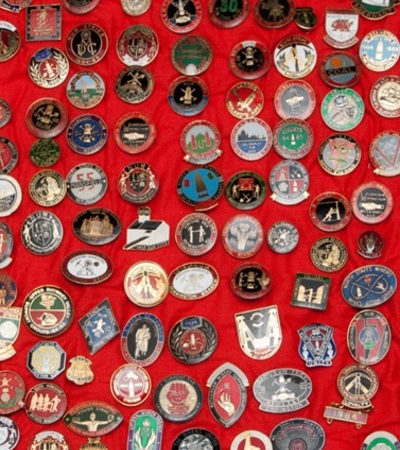
BMBC.TH.2957
Houghton Main First Million Tankard
Houghton Main Colliery was one of eighteen mines in the Barnsley Area of the National Coal Board. This silver tankard is etched with an image of Houghton Main Pit Head and was created to commemorate the first million tons produced at Houghton Main in 1980. The colliery needed to produce 12,000 and 13,000 tonnes per week to get to that figure.
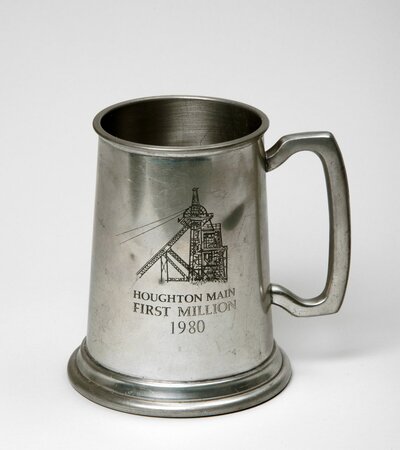
BMBC.TH.2958
First Aid Tin
A metal First Aid Tin in red with white cross, used at Barrow Colliery. When in use it would have contained bandages, finger dressings and assorted plasters. Barrow Colliery was a coal mine in Worsborough which opened in 1873, with the first coal being brought to the surface in January 1876. It was the scene of a major incident in 1907 when seven miners died. After 109 years of coaling operations, the mine was closed in May 1985.
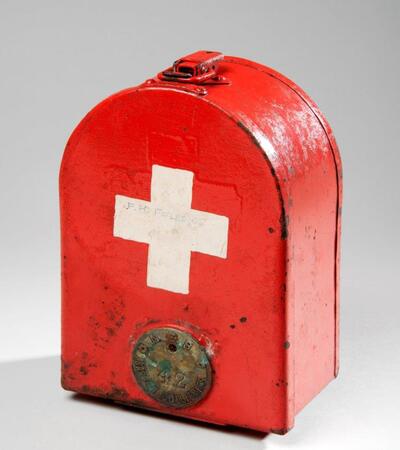
BMBC.TH.2945
